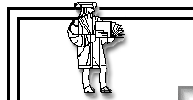 |
 |
|
Flan CharacteristicsThe flans on which ancient coins were struck were made by several methods, all crude by modern standards often resulting in imperfect flans which can have thin areas, odd shapes and inconsistent sizes. Modern coins are struck inside a collar that keeps them round and to an exact size, and they coins seldom spit or crack. Ancient mints did not use collars which allowed the coins to further deform, often cracking and sometimes form wide splits. This chapter is about defects related to the minting process. Damage that occurs later will be discussed in later chapter. ODD SHAPED FLANS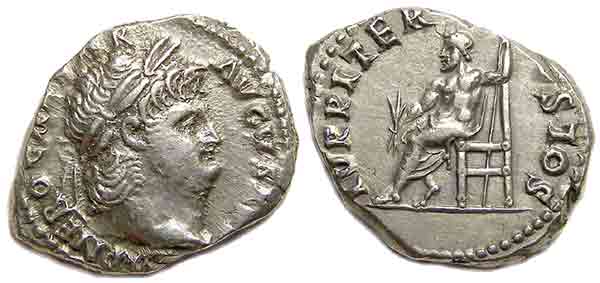
Designs for most Roman coins are more or less round and look best when struck on nearly round flans. This Nero denarius, nearly perfectly centered with the main design and at least part of every letter visible, is technically of average centering but because it on an oval flan it strikes the eye as being poorly centered. If present with two coins at the same price, both of identical grade and centering but one on a round flan and one on an oval flan, most collectors would choose the round one. The one on the oval flan would have to be discounted to find a buyer. 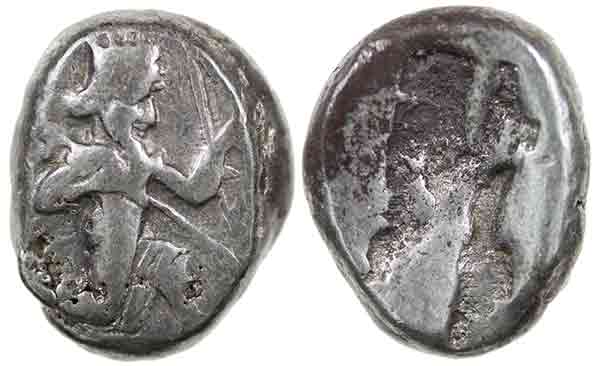
There are ancient coins designed to be on oval flans, such as this Persian siglos with its elongated design which is well-centered on this flan. The majority of sigloi come to us on oval flans. 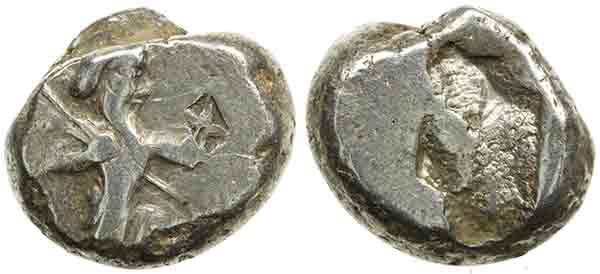
This example struck on a rounded flan dead center on the flan but is poorly centered as the top of the head and feet at the bottom are both off the flan. 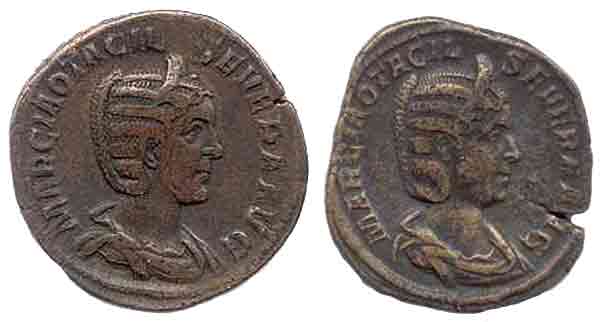
Sestertii were intended to be round but many second and third century sestertii flans have one or more flat edges. Some are on nearly square flans. If choosing between these two Otacilia Severa sestertii of about the same grade, style and strike, which would you choose if both were the same price? Even odder flans exist. In general coins look best when struck on flans with a shape designed to hold the full designs. SMALL FLANSMost ancient coins were struck to specific weight standards with the expectation of a normal flan being about the correct size and thickness for the intended coin. When this works, a well-centered coin is possible on the flan. 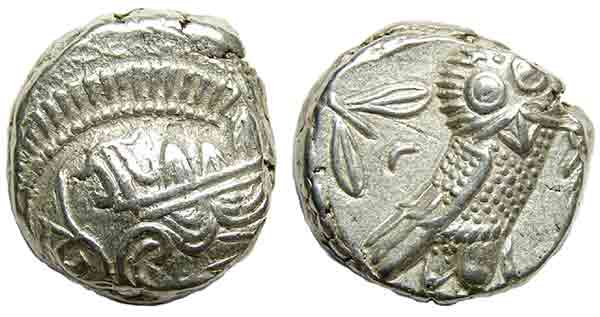
This Athenian tetradrachm is struck on a flan of the correct weight at 17.07 grams, but as it is too thick it is also too small to take the entire design. The result is a coin that can only be defined as very badly centered. CRACKED FLANSFlan cracks are very narrow and usually go deeply into a coin. If very thin they can be difficult to see, especially on an image. Some are wider so more obvious. They result when during striking a flan becomes highly stressed but once the crack forms most of that stress is released. In most cases at release is enough and it is unusual for a coin to have more than one significant crack. Cracks rarely form in higher purity gold coins, are less common on bronze coins, but are commonly found on silver coins. I have noticed higher the purity of the silver the more likely the coin is to have a crack and very pure silver coins such as argentii, silique and miliarense over 50% of specimens will have a crack. Billon and lower purity silver coins are only occasionally cracked. 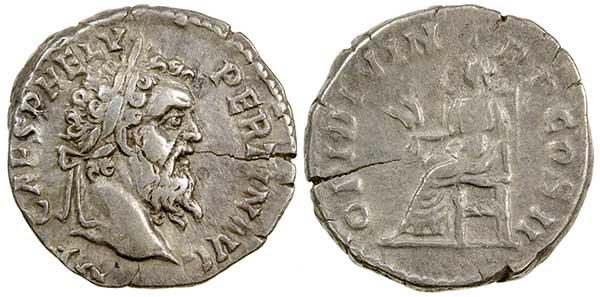
The wider than usual flan crack in this Pertinax denarius extends about half way across with a very thin end visible on the reverse at the elbow. This crack formed as the coin was stuck with the coin circulating for decade or more to wear to VF, and it did not break. At between 85 and 90% silver it is unlikely to have developed heavy age related crystallization so it has no significant danger of breaking with normal handling in a collection. The crack reduces the eye-appeal which does reduce its value, but in this case that reduction is minimal. 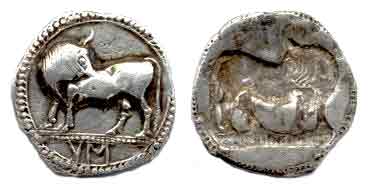
This Sybarus stater is another matter. I have intentionally shown a smaller image, closer to how it would look in the hand and everything looks fine. 
Here you can see a very thin crack starting behind the tail and extending more than 60% across the coin ending below the bull's chin. I suspect a very thin part extends even further. This crack follows a jagged path sometimes branching and at one point curving back. This coin would be very pure silver and expected to be heavily internal with age. In the upper right a bit of smooth skin has come away exposing the crystallization. I believe the initial crack by the tail occurred during striking but the longer jagged extension formed much later, after crystallization. There is significant danger of this coin breaking if miss-handling, and might shatter if dropped. When I owned this coin I was afraid to handle it and sold it full disclosure of it's crack, a very reduced price. I had to mail it to the client and was very relieved when he told me it had arrived safely. SPLIT FLANSMany ancient coins have wider V shaped splits that occurred during striking. While thin cracks form as a result of high stress during striking, flan splits form at imperfections along an edge which create a weak point. They form at lower stress levels and in imperfect flans may form multiple splits, unlike cracks where they is usually only one. Sometimes a crack will form at the tip of a split but the two processes are only vaguely related. 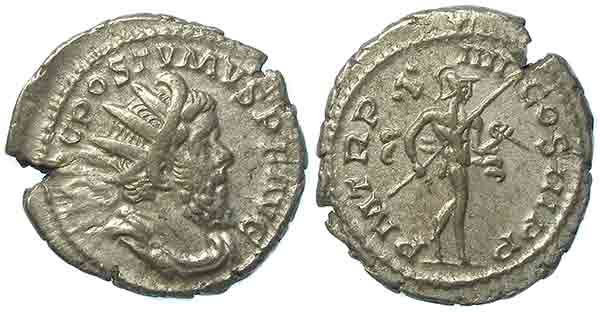
With just one significant but shallow split affecting only a single letter, the eye-appeal of this coin is not significantly affected so there is only a minor reduction in value. This type of split does not increased the risk of breakage. RAGGED FLANS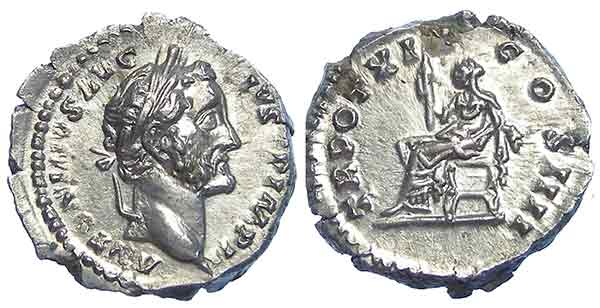
Multiple flan splits can occur resulting in a ragged flan as with this Antoninus Pius denarius. These have a detrimental effect on eye-appeal and thus the value. These splits do not extend far into the coin so their effect is minimal. 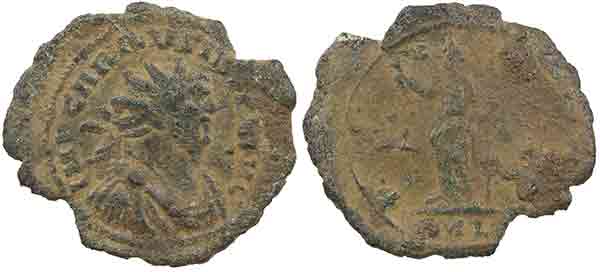
The multiple large flan splits on this Carausius antoninianus have more effect on its eye-appeal so the effect on value is greater. FLAN PREPARATION MARKSSome ancient coins are struck on flans flattened or smoothed prior to striking by filing or lathing techniques, leaving surface marks on the pre-struck flan that are sometimes not totally obliterated by striking. 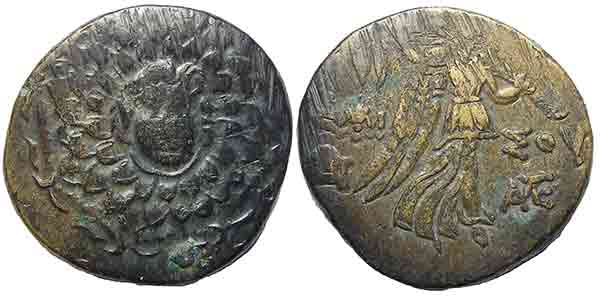
Deep file marks at the top of this Amisos bronze are commonly seen on coins of this type, and were on the flan prior to striking. This particular type normally has these marks so they are expected on them. If minor they do not detract from its value but when heavy as on this specimen they do. Any specimen where the marks were totally obliterated leaving a specimen free of them, would sell for a premium. The same marks on a type on which they are not normally found would dramatically reduce its value. Usually file marks like these all roughly parallel or in two parallel will be flan preparation marks. When they occur as random lines in random directions, they are more likely to be after striking scratches. 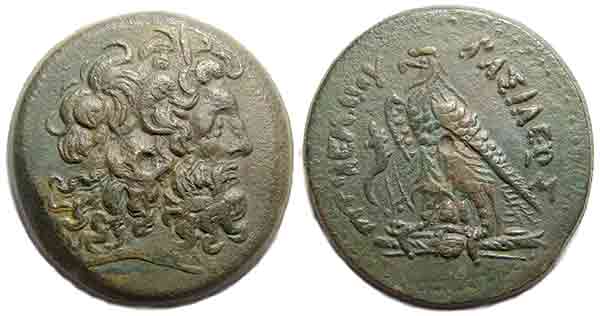
Another flan preparation method was to cut the surface flat with a lath which needs a point to pivot on. One end of the blade is punched into roughly the center of the flan and as the blade cuts off any high points it leaves behind either concentric or spiral rings on the surface. The rings are shallow so on most specimens obliterated by striking, but the pivot punch mark is deeper so remains as seen on this Ptolemy VI bronze. All coins in this series have a similar punch mark so it has little if any effect on the eye-appeal or value unless something makes it more pronounced than normal. 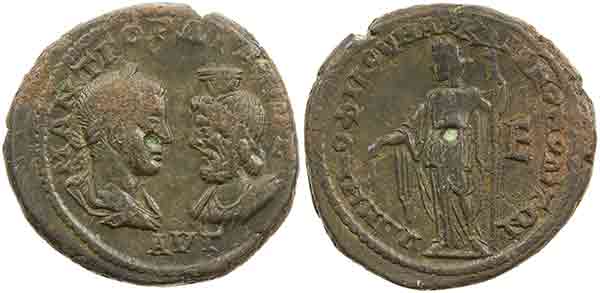
This Gordian III bronze from Markianopolis has more important parts of the design in the center so the effect of its punch depends on how the punch impacts the designs. On this coin it is directly on Gordian's face which does detract from the eye-appeal, slightly reducing its value. 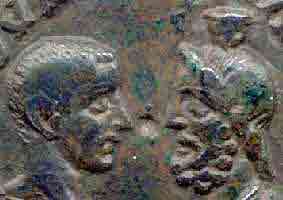
This example of the same type has an nearly identical punch but this time in the field between the portraits where it has no detrimental effects. 
Next page: patina Copyright © 2016 R & T Enterprises Ltd. |